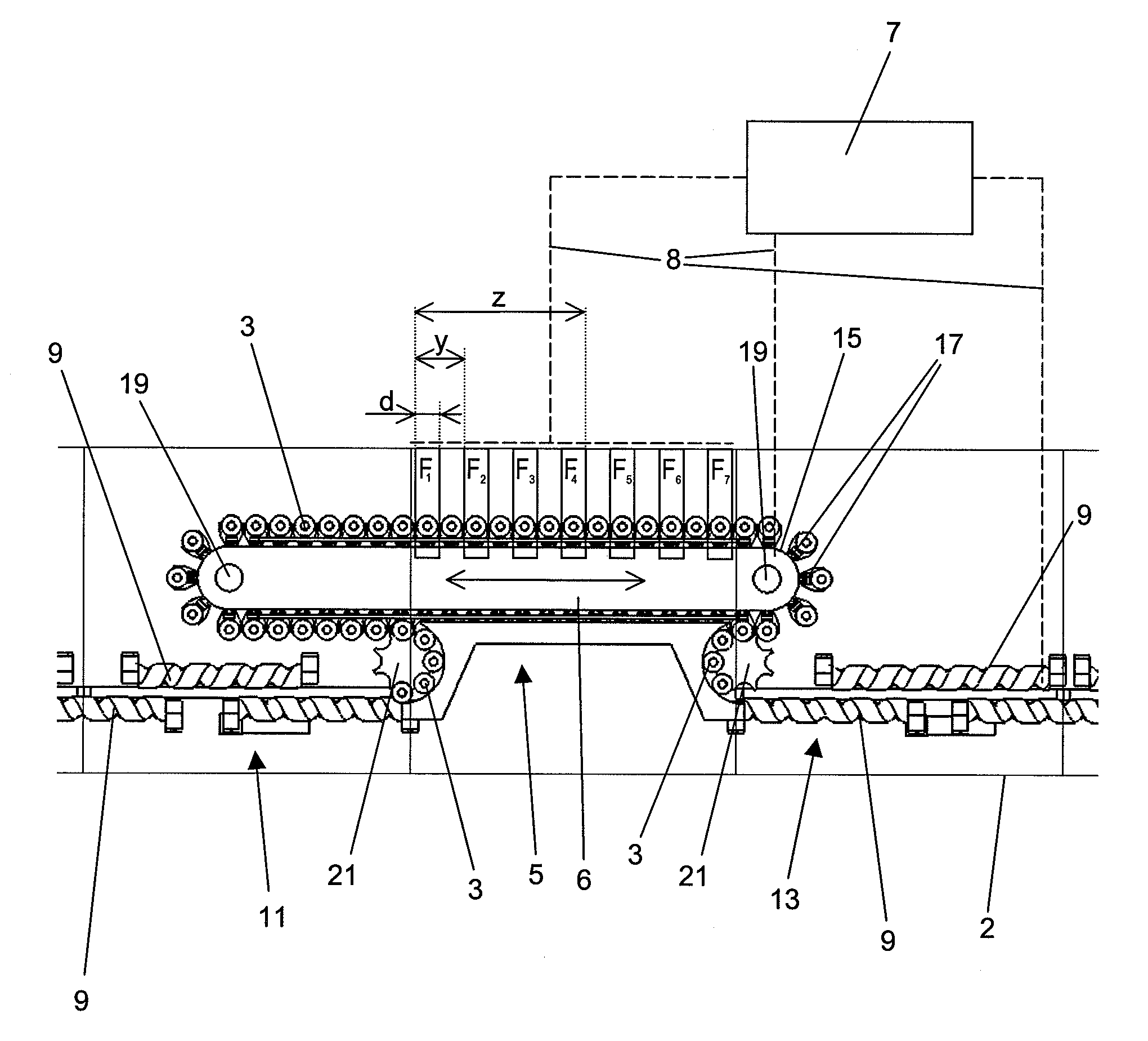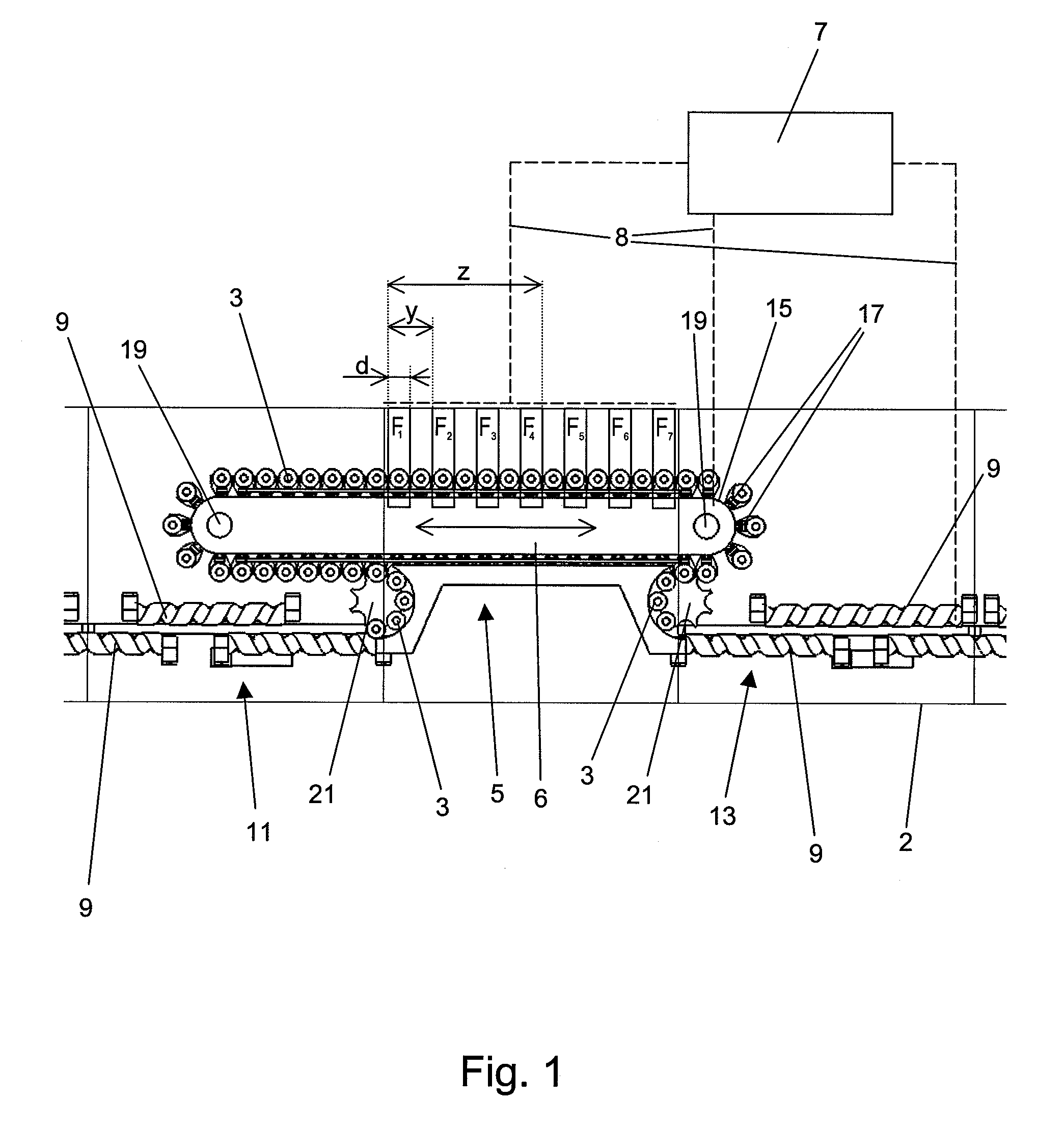Method and device for filling containers
a technology for filling containers and containers, applied in the direction of liquid bottling, packaging goods, special packaging, etc., can solve the problems of increasing the number of tablets which should be present according to the production quality standard, the quality characteristics defined for the filling process are no longer the same as the actual number of tablets, and quality is increased. , to achieve the effect of increasing the level of process stability
- Summary
- Abstract
- Description
- Claims
- Application Information
AI Technical Summary
Benefits of technology
Problems solved by technology
Method used
Image
Examples
Embodiment Construction
[0034]FIG. 1 is a top view of a preferred embodiment of the device according to the invention for filling in cycles of a plurality of containers positively guided one-by-one. The device of the preferred embodiment shown in FIG. 1 represents a portion of a plant for filling bottle-like or tin-like containers with pharmaceutical products.
[0035]In the intake area inside a housing 2 shown on the left in FIG. 1, a second conveyor device 11 uses screw conveyors 9 to guide the containers 3 being supplied continuously one-by-one from the left to a first conveyor device 5. In the discharge area (on the right in FIG. 1), the containers 3 are transferred from the first conveyor device 5 to the third conveyor device 13, which also comprises screw conveyors 9. In the transfer area between the second conveyor device 11 and the first conveyor device 5 and between the first conveyor device 5 and the third conveyor device 13, there is in each case a star wheel 21 with holders for the positively guid...
PUM
| Property | Measurement | Unit |
|---|---|---|
| step length | aaaaa | aaaaa |
| step width | aaaaa | aaaaa |
| movement | aaaaa | aaaaa |
Abstract
Description
Claims
Application Information
 Login to View More
Login to View More - R&D
- Intellectual Property
- Life Sciences
- Materials
- Tech Scout
- Unparalleled Data Quality
- Higher Quality Content
- 60% Fewer Hallucinations
Browse by: Latest US Patents, China's latest patents, Technical Efficacy Thesaurus, Application Domain, Technology Topic, Popular Technical Reports.
© 2025 PatSnap. All rights reserved.Legal|Privacy policy|Modern Slavery Act Transparency Statement|Sitemap|About US| Contact US: help@patsnap.com



